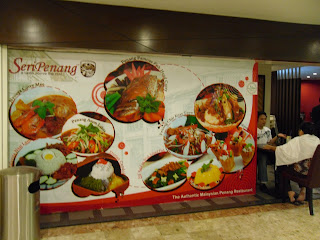XIAN: The Terra-Cotta Army in Pit Number 3
XIAN: The Terra-Cotta Army in Pit Number 2
XIAN: The Terra-Cotta Army in Pit Number 1
 This is Pit 1 where the terra-cotta army comprising cavalry-men, charioteers, chariot-soldiers, archers & cross-bow men, generals, horses, weapons & other implements of war etc were found. A hangar-like chamber has been built to facilitate further digging & research as well as for the convenient viewing by visitors & tourists. Pit 1 the largest of the three pits covers an area of 14.260 sq. metres.
This is Pit 1 where the terra-cotta army comprising cavalry-men, charioteers, chariot-soldiers, archers & cross-bow men, generals, horses, weapons & other implements of war etc were found. A hangar-like chamber has been built to facilitate further digging & research as well as for the convenient viewing by visitors & tourists. Pit 1 the largest of the three pits covers an area of 14.260 sq. metres.  The area now distinguished as Pit 1 was discovered in March 1974 by three villagers who were sinking a well. The news of this startling discovered soon spread like wild-fire throughout the world as it was one of 20th century's most legendary historical discovery. Its existence was not even mentioned as a myth or folk-tale.
The area now distinguished as Pit 1 was discovered in March 1974 by three villagers who were sinking a well. The news of this startling discovered soon spread like wild-fire throughout the world as it was one of 20th century's most legendary historical discovery. Its existence was not even mentioned as a myth or folk-tale.  The three farmers had discovered the 2,200 year-old remains of the life-sized terra-cotta army which had been buried with Qin Shihuangdi the first emperor who first united China. The terra-cotta warriors with their weapons, chariots, horses etc are found in what is now known as Pt 1.
The three farmers had discovered the 2,200 year-old remains of the life-sized terra-cotta army which had been buried with Qin Shihuangdi the first emperor who first united China. The terra-cotta warriors with their weapons, chariots, horses etc are found in what is now known as Pt 1. Pit & the later discovered Pit 2 & 3 are located some 1.5 kilometre east of Qin Shihuangdi's mausoleum. It is widely believed that the terra-cotta army wereburied to guard the Emperor in his after life.
Pit & the later discovered Pit 2 & 3 are located some 1.5 kilometre east of Qin Shihuangdi's mausoleum. It is widely believed that the terra-cotta army wereburied to guard the Emperor in his after life. Before the discovery of the terra-cotta army by three farmers whilst digging a well in March 1974 there were no historical records pointing to the existence of terra-cotta army buried underground.
Before the discovery of the terra-cotta army by three farmers whilst digging a well in March 1974 there were no historical records pointing to the existence of terra-cotta army buried underground.  Why no earlier historical records? It is believed that in order to protect the secret Qin Shihuangdi had before his demise ordered that all those who worked on the terra-cotta project upon completion be killed & buried with the terra-cotta objects.
Why no earlier historical records? It is believed that in order to protect the secret Qin Shihuangdi had before his demise ordered that all those who worked on the terra-cotta project upon completion be killed & buried with the terra-cotta objects.  Archaeologists & other researchers speculated that some 700,000 workers were involved in the making of the terra-cotta warriors & other objects. Therefore wouldn't Qin Shihuang-ti be considered as the first mass murderer in history?
Archaeologists & other researchers speculated that some 700,000 workers were involved in the making of the terra-cotta warriors & other objects. Therefore wouldn't Qin Shihuang-ti be considered as the first mass murderer in history?  The warriors were not only life-sized, each of them bore different facial features. Therefore each of the warriors appeared to be modelled after real people living then.
The warriors were not only life-sized, each of them bore different facial features. Therefore each of the warriors appeared to be modelled after real people living then.  The artisans were very skillful as evidence by the fine details of the moustaches, beards & the hair-style of the terra-cotta warriors & the authentic-like chariots & life-like horses & elephants etc.
The artisans were very skillful as evidence by the fine details of the moustaches, beards & the hair-style of the terra-cotta warriors & the authentic-like chariots & life-like horses & elephants etc.  Due to the ravages of time most of the non-metallic materials buried such as garments, leather armour, harnesses, bows & arrows etc had long disintegrated.
Due to the ravages of time most of the non-metallic materials buried such as garments, leather armour, harnesses, bows & arrows etc had long disintegrated.
THE LANDMARKS of XIAN: The Bell & Drum Towers
THE MALL THE TEOHS BUILT WILL BE FALLING DOWN



















































